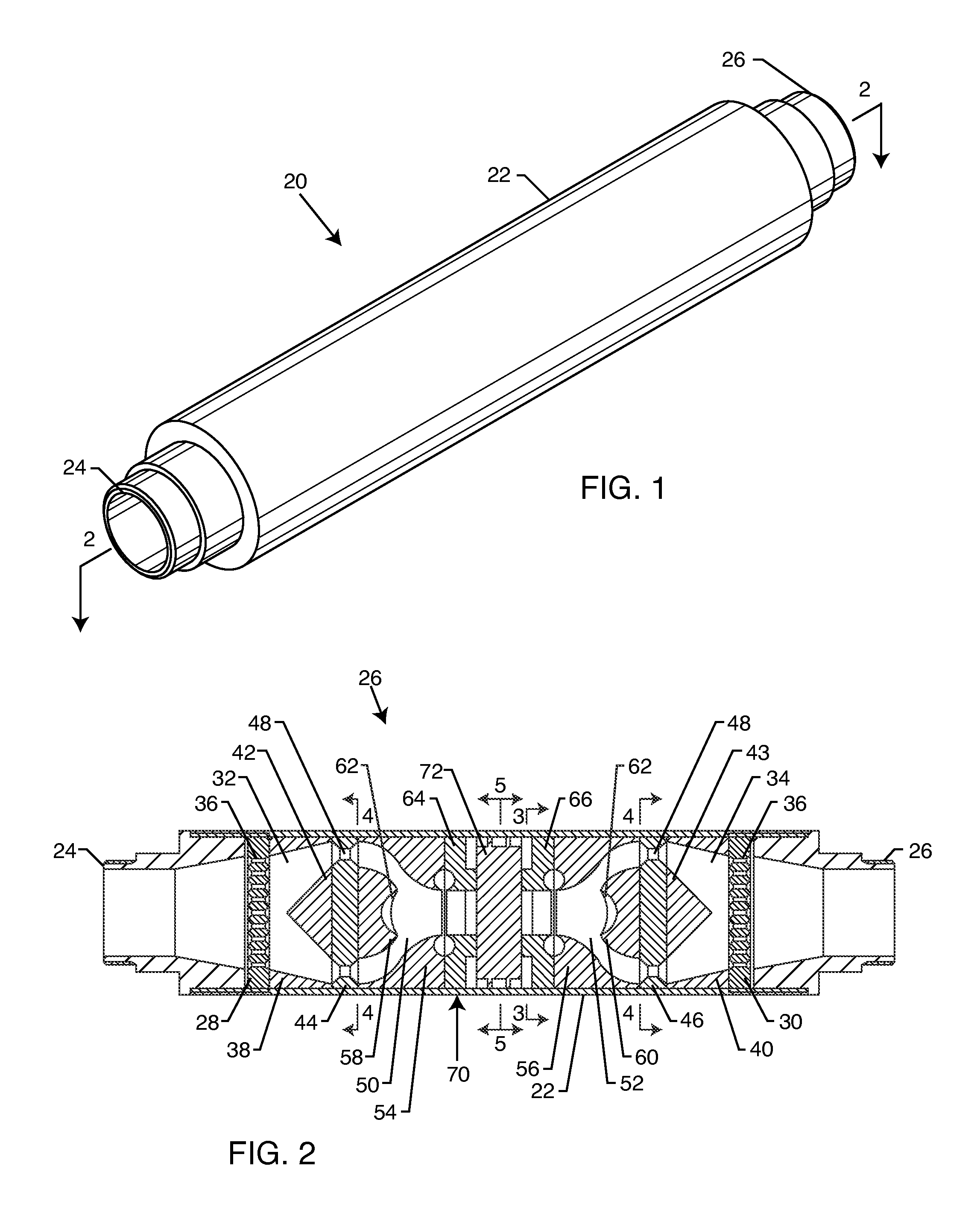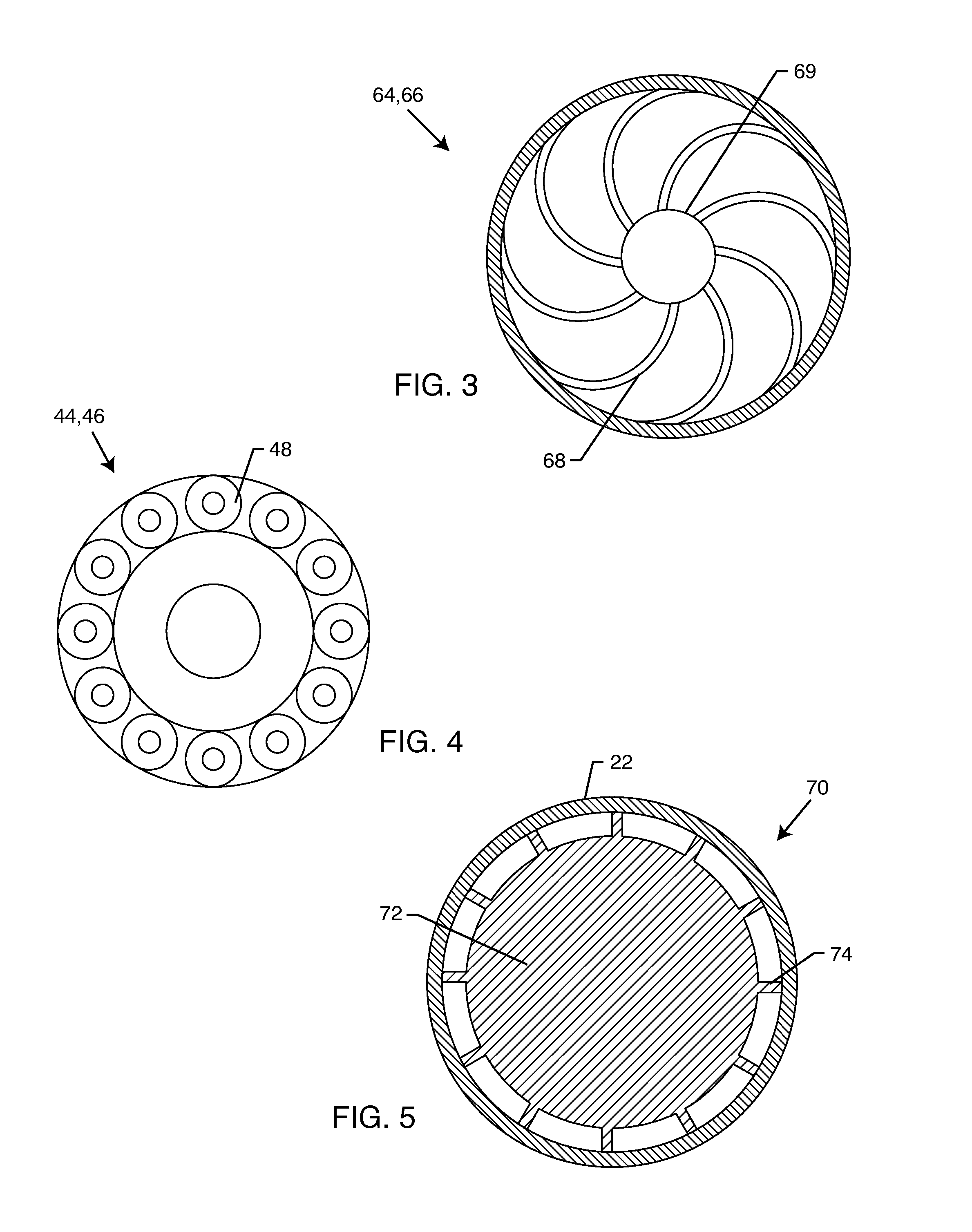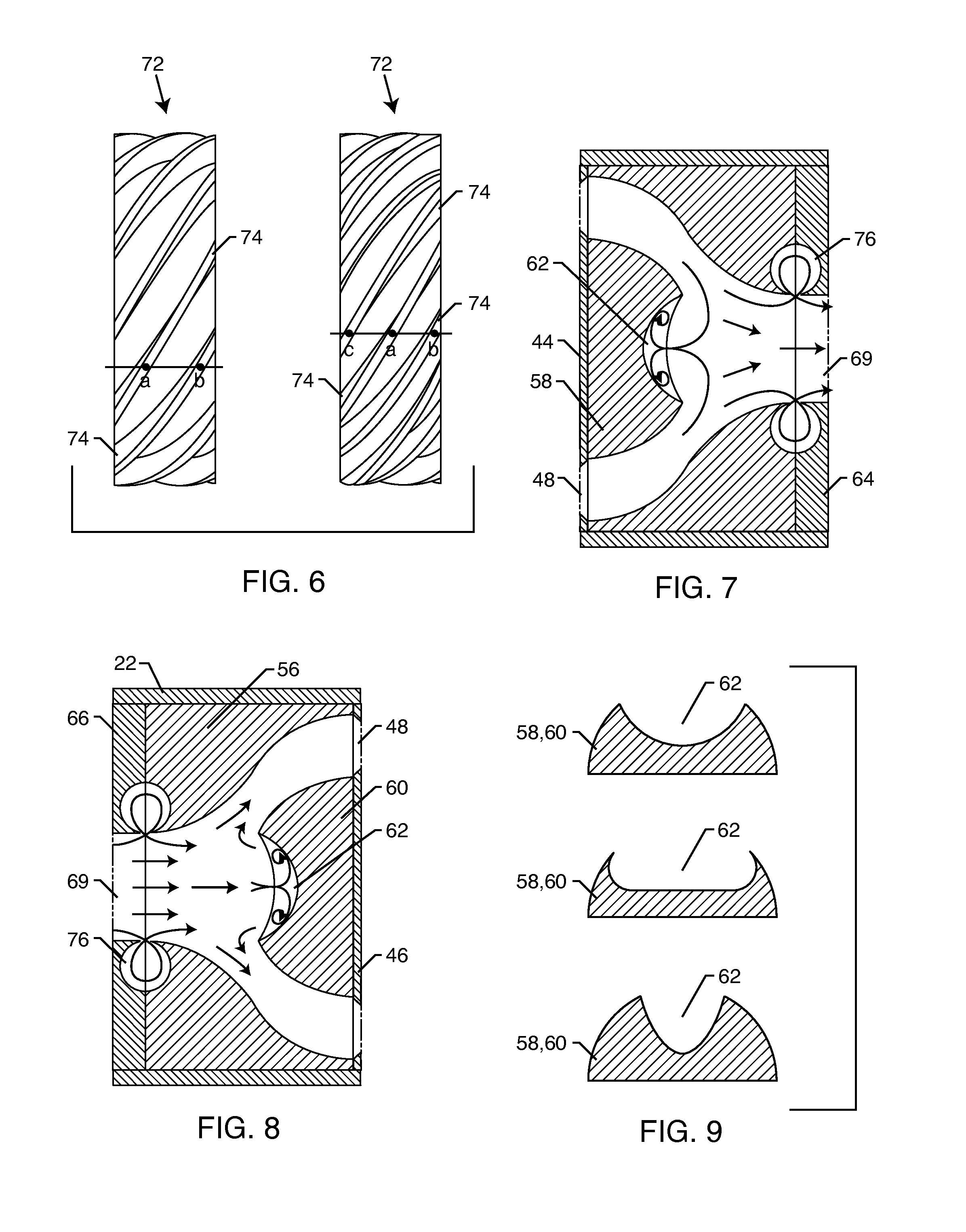Process to remove impurities from triacylglycerol oil
a technology of triacylglycerol and impurities, applied in the direction of fatty oil/fat refining, fatty acid chemical modification, milk preservation, etc., can solve the problems of negative affecting the quality of oil and oil-derived products, oil deterioration, accumulation of non-hydratable phosphatides, etc., to achieve easy scaling up, large water/oil interface, and high throughput
- Summary
- Abstract
- Description
- Claims
- Application Information
AI Technical Summary
Benefits of technology
Problems solved by technology
Method used
Image
Examples
example 1
[0087]Ten liters of RBD palm oil containing 430 ppm ASG, 11 ppm SG and 0.045% FFA was mixed with 2.2% v / v of a 10% sodium hydroxide solution in water and subjected to a single-pass, flow-through hydrodynamic cavitation by using three 11-stage apparatuses placed in series and operated at an inlet pump pressure of 850 psi at a temperature of 90° C. The cavitated mixture was agitated for seven minutes, oil and water phases were separated via centrifugation and the oil phase was analyzed as described elsewhere. (Verleyena et al., 2002) The cavitation-refined oil contained 61 ppm ASG, 14 ppm SG and 0.045% FFA. ASG is likely to be removed partially as SG after the base-induced decomposition. No change in FFA level was observed. Therefore, it is concluded that palm oil can be efficiently refined via the express hydrodynamic cavitation method described, which provides oil suitable for the production of haze-free biodiesel.
example 2
[0088]Ten liters of RBD palm oil containing 430 ppm ASG, 11 ppm SG and 0.045% FFA was mixed with 2.46% v / v of a 10% sodium hydroxide solution in water and subjected to the flow-through hydrodynamic cavitation by using three 11-stage apparatuses placed in series and operated at an inlet pump pressure of 850 psi at a temperature of 90° C. The cavitated mixture was agitated for seven minutes, oil and water phases were separated via centrifugation and the oil phase was analyzed as described elsewhere. (Verleyena et al., 2002) The cavitation-refined oil contained 17 ppm ASG, 6 ppm SG and 0.045% FFA. Thus, it is concluded that the express hydrodynamic cavitation method described achieves a significant reduction of both ASG and SG levels, providing an oil suitable for the production of haze-free biodiesel that meets ASTM requirements. It should be noted that no change in FFA level was observed similar to Example 1.
example 3
[0089]To carry out conventional enzymatic degumming, 2.16 g of 30% citric acid solution was added to 1 kg crude soybean oil containing 650.00 ppm P, 46.40 ppm Ca, 64.70 ppm Mg and 0.80% FFA at 80-85° C. The mixture was subjected to high-shear forces and then gently agitated for fifteen minutes. Then 1.45 g of 14% NaOH solution per 1 kg oil was added and the mixture was vigorously mixed for one minute, cooled to 50-55° C. and 100 ppm phosphorylase A1 Lecitase Ultra in 2% water was introduced. After another agitation at 300-350 rpm and 50-55° C. for one hour the mixture was heated to 80-85° C. followed by centrifugation. The oil refined by this method of conventional enzymatic degumming contained 2.18 ppm P and 0.70% FFA. To carry out a comparable hydrodynamic cavitation-assisted enzymatic degumming with cavitated enzymes retaining full activity, 1.56% v / v water was added to soybean oil containing 650.00 ppm P, 46.40 ppm Ca, 64.70 ppm Mg and 0.80% FFA followed by the flow-through hydr...
PUM
| Property | Measurement | Unit |
|---|---|---|
| temperature | aaaaa | aaaaa |
| temperatures | aaaaa | aaaaa |
| temperatures | aaaaa | aaaaa |
Abstract
Description
Claims
Application Information
 Login to View More
Login to View More - R&D
- Intellectual Property
- Life Sciences
- Materials
- Tech Scout
- Unparalleled Data Quality
- Higher Quality Content
- 60% Fewer Hallucinations
Browse by: Latest US Patents, China's latest patents, Technical Efficacy Thesaurus, Application Domain, Technology Topic, Popular Technical Reports.
© 2025 PatSnap. All rights reserved.Legal|Privacy policy|Modern Slavery Act Transparency Statement|Sitemap|About US| Contact US: help@patsnap.com



